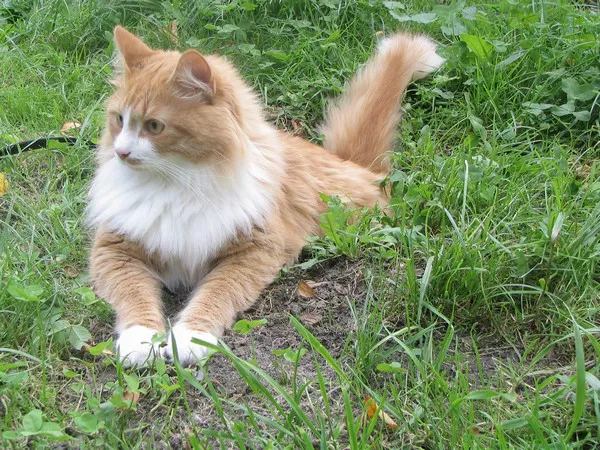Himalayan cats, with their striking blue eyes and luxurious long coats, are a sight to behold. As devoted pet parents, we want to ensure that our Himalayan companions not only look their best but also maintain optimal health and hygiene. One question that often arises among Himalayan cat owners is whether these regal felines require baths to keep their coats clean and healthy. In this comprehensive guide, we’ll explore the grooming needs of Himalayan cats, delve into the topic of bathing, and provide tips on how to keep your Himalayan cat‘s coat pristine and beautiful.
Understanding Himalayan Cats: A Breed Overview
Before diving into the specifics of grooming, it’s essential to understand the unique characteristics and needs of Himalayan cats.
1. Physical Features
Himalayan cats are known for their distinctive appearance, which is a result of crossbreeding between Siamese and Persian cats. They have striking blue eyes, a flat face, and a long, flowing coat that requires regular grooming to prevent mats and tangles.
2. Temperament
Himalayan cats are known for their sweet and affectionate nature. They are often described as gentle, calm, and loving companions who enjoy lounging in the sun or cuddling up with their favorite humans.
Grooming Requirements
Due to their long coats, Himalayan cats require regular grooming to keep their fur free from mats, tangles, and debris. Daily brushing is recommended to prevent knots from forming and to distribute natural oils throughout the coat, promoting a healthy shine and reducing shedding.
The Importance of Grooming for Himalayan Cats
Grooming plays a crucial role in the health and well-being of Himalayan cats, helping to maintain their coat’s condition, prevent skin problems, and promote overall hygiene.
1. Preventing Mats and Tangles
Himalayan cats have dense, long fur that is prone to matting and tangling if not properly maintained. Regular brushing helps remove loose hair, debris, and tangles from the coat, preventing mats from forming and reducing the risk of skin irritation or discomfort.
2. Stimulating Blood Circulation
Brushing stimulates blood circulation to the skin, which promotes healthy hair growth and helps distribute natural oils produced by the skin throughout the coat. This not only enhances the coat’s shine and texture but also helps keep it moisturized and less prone to dryness or brittleness.
3. Preventing Hairballs
Regular grooming helps reduce shedding and the accumulation of loose hair, which can lead to the formation of hairballs if ingested by the cat during self-grooming. By removing loose hair through brushing, you can help minimize the risk of hairballs and associated digestive issues.
Do Himalayan Cats Need Baths?
While regular grooming is essential for Himalayan cats, the question of whether they need baths is a topic of debate among pet owners and experts.
1. Less Frequent Baths
Due to their long coats and potential for matting, Himalayan cats may benefit from occasional baths to help keep their fur clean and free from debris. However, baths should be less frequent compared to short-haired breeds, as excessive bathing can strip the coat of its natural oils and lead to dryness or skin irritation.
2. Personal Preference
Whether or not to bathe your Himalayan cat ultimately depends on personal preference and individual circumstances. Some owners may find that their cat’s coat remains clean and manageable with regular grooming alone, while others may opt to bathe their cat occasionally to maintain hygiene and appearance.
3. Potential Benefits of Baths
1. Deep Cleaning: Baths can provide a deeper level of cleaning than brushing alone, helping to remove dirt, oil, and odor from the coat and skin.
2. Reducing Allergens: Bathing may help reduce allergens present in the cat’s fur, which can benefit allergy sufferers in the household.
3. Skin Health: Proper bathing techniques can help promote skin health and reduce the risk of skin problems such as dermatitis or fungal infections.
Tips for Bathing Your Himalayan Cat
If you decide to bathe your Himalayan cat, it’s essential to approach the process with care and patience to ensure a positive experience for both you and your feline friend.
1. Prepare Properly
Gather all necessary supplies before starting the bathing process, including cat-friendly shampoo, towels, and a non-slip mat for the bathtub or sink. Trim your cat’s nails beforehand to minimize scratching, and ensure that the water temperature is lukewarm and comfortable for your cat.
2. Introduce Gradually
Introduce your cat to the bathing process gradually to help reduce stress and anxiety. Start by allowing your cat to explore the bathtub or sink and become familiar with the surroundings before introducing water. Use a calm and reassuring tone of voice to help reassure your cat and make the experience more pleasant.
3. Use Gentle Techniques
When bathing your Himalayan cat, use gentle techniques and avoid excessive scrubbing or rubbing, which can cause discomfort or irritation. Use a cat-specific shampoo that is formulated for sensitive skin and avoid getting water or soap in your cat’s eyes, ears, or mouth.
4. Rinse Thoroughly
After shampooing, rinse your cat’s coat thoroughly to remove all traces of soap and prevent residue from accumulating in the fur. Use lukewarm water and gentle massage motions to ensure thorough rinsing, and pat your cat dry with a towel afterward.
Conclusion: Grooming and Bathing Your Himalayan Cat
In conclusion, while Himalayan cats do not necessarily require baths as frequently as some other breeds, occasional bathing can help keep their long coats clean and healthy, especially if they spend time outdoors or are prone to getting dirty. However, regular grooming through daily brushing remains the cornerstone of maintaining a Himalayan cat’s coat condition and overall hygiene.
Whether you choose to bathe your Himalayan cat or not, it’s essential to prioritize regular grooming to prevent mats, tangles, and other grooming-related issues. By understanding your cat’s grooming needs and taking appropriate measures to keep their coat clean and healthy, you can ensure that your Himalayan companion looks and feels their best for years to come.

























